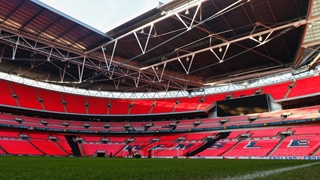
1. Types of free kick
Direct and indirect free kicks are awarded to the opposing team of a player, substitute, substituted or sent-off player, or team official guilty of an offence.INDIRECT FREE KICK SIGNAL
The referee indicates an indirect free kick by raising the arm above the head; this signal is maintained until the kick has been taken and the ball touches another player, goes out of play or it is clear that a goal cannot be scored directly.
An indirect free kick must be retaken if the referee fails to signal that the kick is indirect and the ball is kicked directly into the goal.
BALL ENTERS THE GOAL
- if a direct free kick is kicked directly into the opponents’ goal, a goal is awarded
- if an indirect free kick is kicked directly into the opponents’ goal, a goal kick is awarded
- if a direct or indirect free kick is kicked directly into the team’s own goal, a corner kick is awarded
2. Procedure
All free kicks are taken from the place where the offence occurred, except:- indirect free kicks to the attacking team for an offence inside the opponents’ goal area are taken from the nearest point on the goal area line which runs parallel to the goal line
- free kicks to the defending team in their goal area may be taken from anywhere in that area
- free kicks for offences involving a player entering, re-entering or leaving the field of play without permission are taken from the position of the ball when play was stopped. However, if a player commits an offence off the field of play, play is restarted with a free kick taken on the boundary line nearest to where the offence occurred; for direct free kick offences a penalty kick is awarded if this is within the offender’s penalty area
- where the Law designates another position (see Laws 3, 11, 12)
- must be stationary and the kicker must not touch the ball again until it has touched another player
- is in play when it is kicked and clearly moves
- at least 9.15 m (10 yds) from the ball, unless they are on their own goal line between the goalposts
- outside the penalty area for free kicks inside the opponents’ penalty area
Where three or more defending team players form a ‘wall’, all attacking team players must remain at least 1 m (1 yd) from the ‘wall’ until the ball is in play.
A free kick can be taken by lifting the ball with a foot or both feet simultaneously.Feinting to take a free kick to confuse opponents is permitted as part of football.
If a player, while correctly taking a free kick, deliberately kicks the ball at an opponent in order to play the ball again but not in a careless or reckless manner or using excessive force, the referee allows play to continue.
3. Offences and sanctions
If, when a free kick is taken, an opponent is closer to the ball than the required distance, the kick is retaken unless the advantage can be applied; but if a player takes a free kick quickly and an opponent who is less than 9.15 m (10 yds) from the ball intercepts it, the referee allows play to continue. However, an opponent who deliberately prevents a free kick being taken quickly must be cautioned for delaying the restart of play.
If, when a free kick is taken, an attacking team player is less than 1 m (1 yd) from a ‘wall’ formed by three or more defending team players, an indirect free kick is awarded.
If, when a free kick is taken quickly by the defending team from inside its penalty area, any opponents are inside the penalty area because they did not have time to leave, the referee allows play to continue. If an opponent who is in the penalty area when the free kick is taken, or enters the penalty area before the ball is in play, touches or challenges for the ball before it is in play, the free kick is retaken.
If, after the ball is in play, the kicker touches the ball again before it has touched another player an indirect free kick is awarded; if the kicker commits a handball offence:
- a direct free kick is awarded
- a penalty kick is awarded if the offence occurred inside the kicker’s penalty area unless the kicker was the goalkeeper in which case an indirect free kick is awarded








